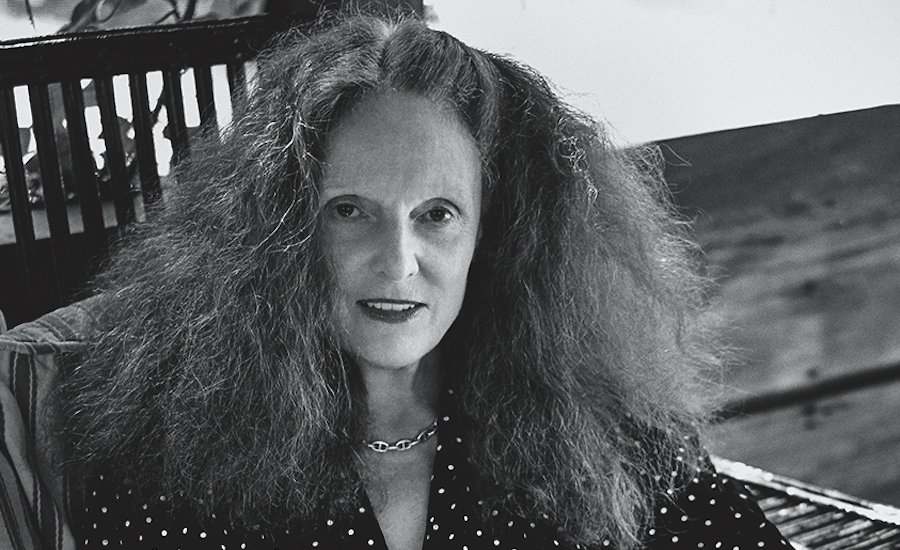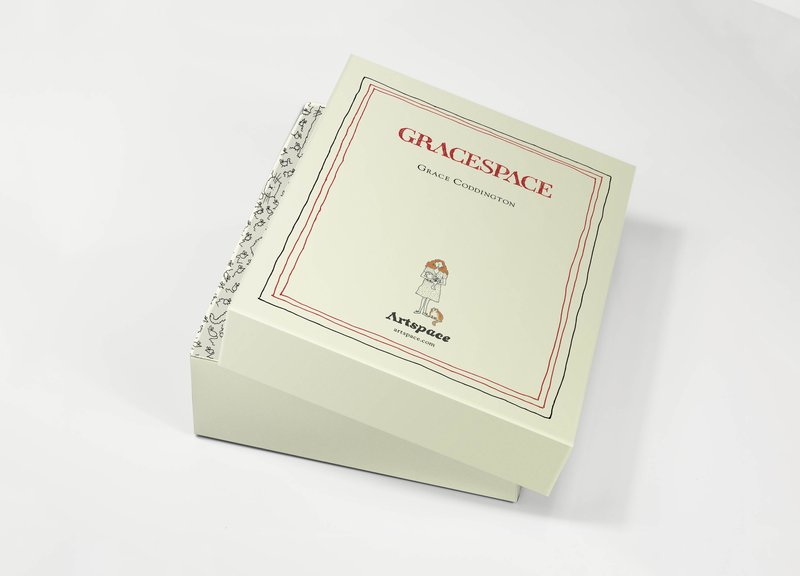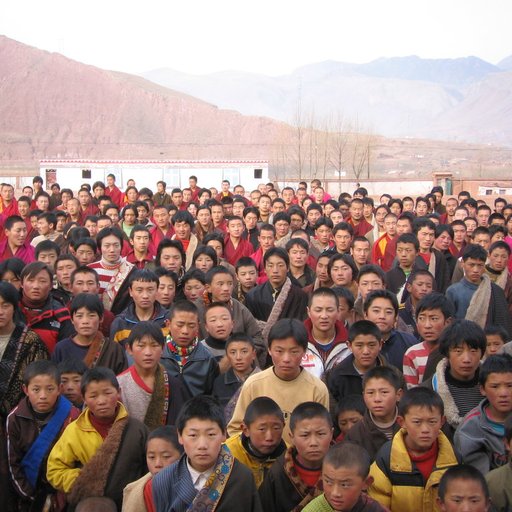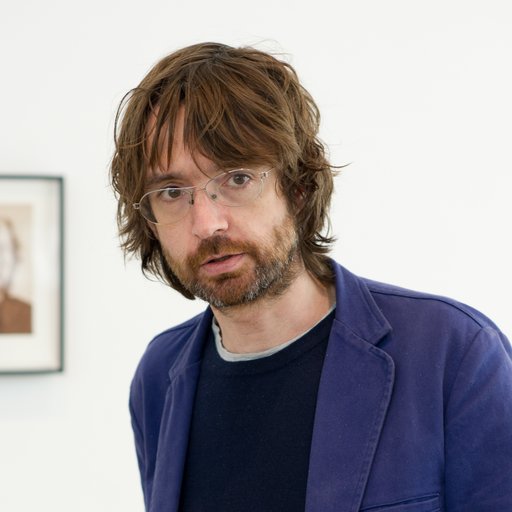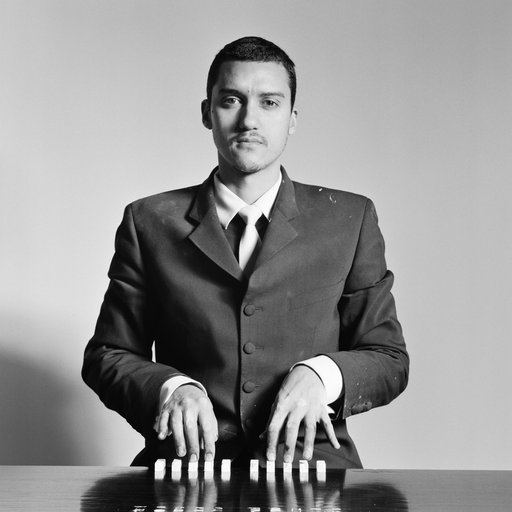A legend in the fashion community, Grace Coddington began her career as a teenage model in the pages of Vogue and then stayed with that magazine for five decades as an editor and creative director, lending her ferociously inventive eye to styling gorgeous spreads that defined contemporary style.
Now Coddington’s work with some of fashion’s greatest photographers has been gathered together into two deluxe Phaidon books celebrating her work at first British and then American Vogue—but what is lesser known is that she has always been an artist in her own right as well, using a fine-tipped pen to set down her wry observations of the fashion world in drawings.
This month, a suite of these drawings, taken from Coddington's 2012 book Grace: A Memoir, are being released as a premier-quality boxed set of editions on Artspace. To discuss how they came about, as well as the other creative projects she has been pursuing since stepping back from her full-time involvement with Vogue last year, Artspace editor-in-chief Andrew M. Goldstein spoke to Coddington about her abiding love of—and reliance on—the art of drawing.
Most people know you as for the visionary photo spreads that you produced at Vogue, and, perhaps for your drawings of fashion-forward cats that you collected in your book The Catwalk Cats. But, as a matter of fact, drawing has played a much deeper role in your work over the years. When did you first start to draw the world around you?
Oh god. I started as a child in school, drawing pictures of all my classmates and the other people around me. But I didn’t draw then as much as I do now. You know, I’m not very good with words, so I always found it easier to illustrate with pictures rather than with words. It’s always been based on real people or real animals—not too much from my imagination. Well, what they do is in my imagination, but the actual cast of characters are always real.
It evolved when I became a fashion editor and you would see everybody writing notes in their notebook when they went to collections, like “pink dress with tall skirts and Balmain sleeves,” but I never could find those words quickly. So, I started to draw every dress that came down the runway, and continued to do that for close to 50 years, oh my goodness. Every collection is in my drawer, with pretty much every dress, and it helps me to remember the collections.
I mean, the drawings I do are not that good because they’re very quick—but sometimes, if I want to remember a particular dress, then I develop that one a bit further on the page so I can remember more. Then that evolved again because my then-boyfriend and I both were traveling all the time, so, back in the day of faxes, instead of writing him letters I would send him a fax of drawings of what I was doing, but with cats instead of myself. Sometimes I put myself in the picture, too, but mostly it was a cat. If I went to the Japanese restaurant, I had my cat sitting at the Japanese restaurant. If I went sailing, I drew my cat sailing in the boat, rather than drawing myself.
I guess I was kind of a bit scared of drawing people and making them really look like the person. The only person I could make look like themselves was me. So I kind of stuck to that for a while. Then I started drawing my boyfriend, and we would send all these faxes back and forward for years and years and years. We’ve been together a long time. Eventually, I gathered all the faxes together, and made them into the book, and it became Catwalk Cats.
Your partner, the hairstylist Didier Malige, also contributed to the book, is that right?
Yes. He took a photograph of the cats, because I wanted people to know that those cats actually were based on real cats. They really existed. They weren’t just figments of my imagination.
The cats are very sweet. They remind me of Warhol’s cats a little, actually.
He’s a bit better of an artist than me, though. [Laughs]
They share that thin, scratchy line. It’s very much like an idea being put down on paper.
Well, my writing is thin and scratchy too. I just draw easier than I write words, so that’s why I went there. And, you know, one has the style one has. Sure, I had art classes at school, but I can’t even remember what they taught me. Not much. We just sat there and painted—it was more about painting than drawing. They didn’t even teach you the history of art. It was very rudimentary instruction.
I think what people appreciate about your drawings is that they’re so unadorned. They’re intimate and personal and somewhat casual, which can be more charming than something that’s really finished and overdetermined. Has the way that you draw changed over time, since you were a girl drawing classmates?
It’s gotten a little bit better, but I can’t say that it’s really changed. I mean, I think I’m able to do likenesses of people a little bit better. But it’s always been an almost childlike drawing, and I like it like that. I’m not trying to do a life class and make it like Michelangelo or something. That’s not my aim. I like it looking cartoonish.
What kind of pen do you draw with?
It’s just a Pentel. I’m always looking for a thinner pen, and I’ve actually just discovered a thinner Pentel than the one I had previously been using. But also, what I do, which is a bit like cheating, is that I draw the drawings bigger and then I shrink them. Because if you shrink them, the line becomes finer.
What a nice trick.
That’s how I get the lines so fine. I mean, it’s not shrunk by much, but it is shrunk. I like playing around with them. Somehow, when the drawing gets smaller, I like it more. I don’t want want to really say it’s more precious, but it’s cuter when it’s smaller. I like a lot of white space, too.
It feels very much in the vein of fashion illustration.
Well, I’m a fashion person. Also, I do play with the thing of putting dresses on my cats. I don’t actually put dresses on my cats, and I would never dress them up. They wouldn’t like it—or, they wouldn’t expect it. But the dresses I draw on them are always actual dresses, Marc Jacobs, Louis Vuitton, or something like that. I draw all my favorite designers on the cats.
Once, I was asking Oscar de la Renta to make dresses for me for a story I was doing and I was trying to describe to him the feeling of the dress. I didn’t want to design the dress for him—obviously, because that would have been wrong—but to give him the idea of the kind of style that I wanted. So rather than draw it on a person, as if I was sending him a fashion drawing, I sent him a drawing of the cat wearing the dress, which amused him. And he made the most interesting dress. [Laughs]
When you look at your drawings can you remember of the fashion credits for each of the pieces?
Oh, yes. Of course.
The drawings in your new Artspace portfolio take a slightly different approach. They are witty vignettes of fashion people—along with the occasional cat—that seem to capture the sense of a moment from your life, and in fact you used them to illustrate your 2012 memoir. How did those come about?
I wanted to make my memoir more of a special-looking book, and I always loved the format of the New Yorker where they drop a drawing into a page. I decided that’s what I would do, illustrating some things that happened in my life at the opening of each chapter.
Now you are embarking on a new chapter in your life. You’re coming up on the one-year anniversary of your transition from Vogue, and you’ve already released a new book with Phaidon collecting your work at American Vogue; you’ve created a new perfume with Comme des Garçons, Grace by Grace Coddington; and you’re working with Tiffany & Co. as the jeweler’s first outside creative partner, overseeing its elegant new ad campaign. At the same time, you are still keeping an office at the magazine, in an at-large capacity. It seems you’re busier than ever, in fact. What has that change been like?
Mainly it’s nice to now be doing a lot of different things, rather than just being focused on Vogue and working out of one office. So, I have another office outside for all the other activities that I’m involved in which, because when you do a book you don’t just put a book together and that’s the end of it—there are book signings and talks and other things. For instance, I recently gave a talk at Yale about working in photography. All these things need preparation, so it’s better not to do that in the Vogue office, which is very focused on the pages of Vogue.
So now I have my own space, and it’s fun to do things out beyond what I’ve been doing for 50 years. It kind of gives you a whole new energy. I mean, I’m trying desperately to do a movie. What I really want to do is an animated movie, but getting into that world is really hard. Hard and slow, because the learning process could take quite some time. I keep saying to everybody, “You better hurry up,” because I’m not that young anymore. An animated movie would be my dream.
Have you ever done animation before?
In a very small way—I’ve been doing little, teeny videos on my Instagram. They’re just so fun to do, and it’s really fun to see my drawings come alive.
It seems fitting, considering your adventurous eye, that you would be an avid user of Instagram.
Well, I don’t follow anyone, so I’m not really an Instagram person. But I was doing my project with the perfume and my partner in that business said to me, “You have to start an Instagram, because Commes des Garçons doesn’t advertise so it’s the only way of getting the word out there”—apart from just general publicity, of which we did quite a bit. It became important to build an Instagram following, so that’s when I started. And my Instagram is 90 percent drawings, because I just didn’t want to do that normal Instagram thing of showing what everybody’s having for breakfast. I had so much fun doing drawings of, just, stuff, and then we started doing these videos, actually for the perfume. They’re really cute, and they’re at @therealgracecoddington.
Well, if we’ve seen anything this past year, it’s that social media has swept aside so much of the established way of doing things.
I know. I can’t say that I like it, at all. I’m very opposed to it. But if you actually can’t get on without it, who am I to say it’s not worth anything? Even the President does it.
It must be such an interesting experience to go from communicating with the millions of Vogue readers every month through your work to having your own unique, unmediated audience at your fingertips every day through Instagram.
It’s true. I mean, I am still working for Vogue, doing four shoots a year for them, but I don’t know how long that will go on for. Certainly now it’s all the other things I’ve been doing that keeps my name alive, I think.
Going back to your animated movie, do you envision it featuring people, or will it be cats—or will it be something else?
We haven’t written it yet—I’m about to sit down with my longtime friend Michael Roberts and write an outline of it. But it’s kind of about the cats. I don’t want to say too much because we haven’t really formulated it yet. I just know that I want to see all my drawings move and tell a story, because I was inspired by doing those little Instagram videos. Some of them are really cute. There’s one with a cat wheeling a shopping cart and going shopping for my perfume, and it’s really funny because she’s got high heels on, so you hear her click-clacking away. Then, clunk, the big bottle of perfume rolls around in her shopping cart.
I have to admit, I like your drawings of fashion people too. Your Karl Lagerfeld in particular is a classic.
[Laughs] No, I know. Karl’s easy because as soon as you a ponytail and some dark glasses it really looks like him. But, I don’t know, I’m particularly proud of the one I did of Hedi Slimane when he left Saint Laurent, because I think it really looks like him. I just put black rings under his eyes and it worked. You see and be the judge.
Since I started drawing people I haven’t done a whole lot, and they’re all pretty much fashion people only because they were relevant for that moment. I’ve also done Marc Jacobs and Raf Simmons. It’s all on my Instagram.
I’ve heard that you’ve also been talking with some designers about possibly collaborating with them individually, as a stylist. Is that something that’s interesting to you?
Well, you know, everything is interesting to me. Let’s see what a specific thing is. But I’m not particularly looking to be a freelance stylist, since I’ve done the styling side of it for 50 years. For instance, the Tiffany campaign was more interesting to me because it’s about the campaign as a whole rather than just what dress to put on whom. So I’m more interested in roles that are bigger than just being a stylist. I’m actually working on two movies, one of which is from my memoir, but neither one moves very fast. I’ve been wrestling with the memoir for three years, and the story has been bought by A24 which is a wonderful production company that does more indie movies, which is the direction I would like to see it take. But nothing concrete has actually happened yet.
You have such a brilliant eye for casting—what is it like to have the prospect of casting yourself?
Oh, firstly, you can’t even do that until the movie is just about to happen because I’m more interested in the earlier years of my life. So I would be looking for an actor that’s young, and if you start too early by the time anything happens they’ve grown too old. [Laughs] I’d probably look at the English ones, just because.
Sounds like Hollywood has got to start speeding up.
I wish! It’s frustrating to me. I mean, having worked in a magazine where the whole process is something like a mini movie—which is what I tend to do in my fashion pictures—that’s a two-month process from beginning to end. So, dealing with Hollywood is a very slow process. But I’m not about to tell them how to do their thing! So, in the meantime, I’m open to all sorts of opportunities that come along. It could be anything!











